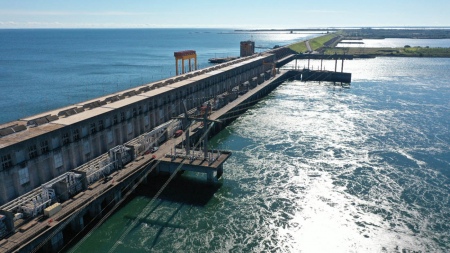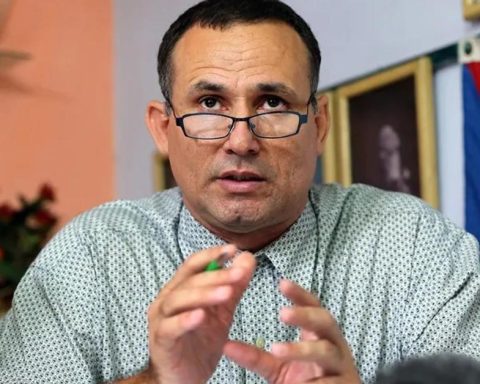Hydroelectric power and renewables increased their generation strongly to supply the 3.6% increase in electricity consumption by 2022, given a lower use of thermal energy in an international context marked by the increase in international fuel prices fossils, according to a report by the Argentine Wholesale Electricity Market Company (Cammesa).
The local demand for electricity in 2022 reached 138,755 gigawatts/hour (Gwh), with an increase of 3.6% compared to the 133,877 Gwh in 2021while generation had an increase of 1.7% in the same period, a difference offset by a 99% drop in exports.
In this balance to ensure energy supply, Hydroelectric generation closed the year with a generation increase of 25.2% and renewable energies 10.9%, compared to 2021, while the contribution of nuclear energy registered a retraction of 26.6% and that of thermal source 9.2%.
The maximum power reached in 2022 is the system record with 28,283 MW, and in this way the local demand was met, which presented a general growth of 3.6%, with a growth of almost 7.0% in the months particularly “cold” and “warm”, with increases in all the segments that comprise it.
Thus, by type of user, small or residential users from January to December increased their consumption by an average of 3.8%; those of intermediate consumption such as shops and small industries 5.3% and those of large consumption such as shopping centers and larger industries 1.8%.

According to Cammessa’s details, “the increase in demand was covered by greater hydro generation, since the middle of the year higher flows, especially in Yacyretá and Salto Grande, greater renewable generation with new power and an average growth of around 200 MW average, and the increase in the import of energy, increasing almost 5,500 GWh (630 average MW) in relation to the year 2021”.
The variation shows that thermal generation had an annual drop of 9.2% (from 90,074 Gwh in 2021 to 81,746 Gwh in 2022), although this modality remained the main one, with 56.36% of the total.
The main incidence in this fall in participation responded to the lower natural gas availability and fuel costs. Although the barrel of oil ended the year an average of 43% higher than the previous year, the greatest difference occurred in the first semester, reaching +70% in winter, an indicator related to the behavior of international prices.
Hydroelectric power had an increase of 25.2%, going from 24,116 Gwh in 2021 to 30,186 last year, and kept the second position in generation, with 20.81%.
In third place, the different modalities of renewable energies (biomass, wind, solar, biogas and hydroelectric projects of less than 50 Mw) with an annual increase of 10.9% (from 17,437 Gwh to 19,340 Gwh), with a participation of 13.33% of the total generation and 13.9% in meeting the demand.

The nuclear energy registered a decrease of 26.6% (from 10,170 Gwh to 7,469 Gwh) and a participation of 5.15%m while imports had a jump of 670% (from 819 Gwh to 6,310 Gwh) and a participation of 4.35%.
Cammesa highlighted that “with regard to hydroelectric generation, although the years 2022 and 2021 stand out for presenting ‘dry year’ characteristics, in recent months an increase in generation was observed compared to the previous year mainly associated to the increase in the flows of the Paraná (Yacyretá) and Uruguay (Salto Grande) basins“.
Likewise, he indicated that “thermal generation ends up being lower in 2022, especially if observed from the winter months, a large part associated with higher costs due to the lower availability of natural gas, as well as competition with other energies at lower costs“.
In line with the drop in thermal generation, total fuel consumption ended up being lower than in 2021, mainly due to the lower availability of natural gas.
In this regard, Cammesa indicated that Natural Gas consumption ended up being less by almost 6 million cubic meters, with an annual fall of 13.2%, in which detail the impact of the war between Russia and Ukraine on the international price was reflected: the demand for national gas had an increase of 1.42%, but that of imported a fall of 59.18%.
Likewise, “the lower availability of gas was reflected in the increase in the consumption of alternative fuels, mainly diesel (of imported origin) and fuel oil”, with a greater participation of that of imported origin compared to that of local production.
The decrease in thermal generation in the first half of last year “is not reflected in the amount of total CO2 emissions, due to the increase in the consumption of alternative fuelsCammesa warned.


















